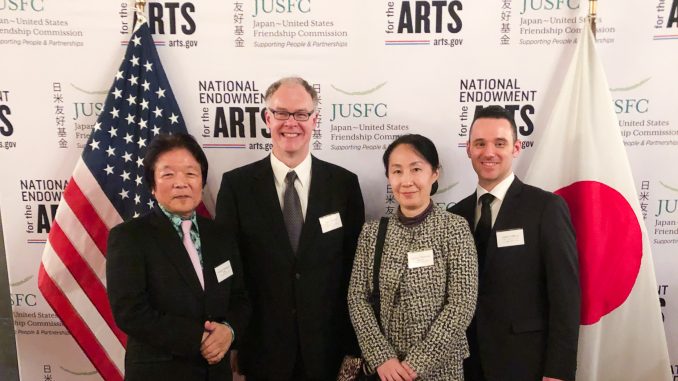
Six months ago, music technology professor Adam Vidiksis and his team of Temple students and alumni would have been in Tokyo, Japan for the 2020 Olympic Games to do a live performance with music, electronics and karate.
But as they have discovered, along with Philadelphia-based composer Gene Coleman, nothing goes quite to plan when a pandemic hits.
Vidiksis and Coleman are forming the Kata Project, a live art performance for the 2020 Olympic Games in Tokyo, Japan. The performance proposal was approved by the National Endowment for the Arts and the Japan-U.S. Friendship Commission as part of the U.S.-Japan Creative Artists Fellowship Program.
This program selected five teams of artists from the U.S. and Japan to showcase projects reflecting a theme of 2020’s Olympic Games: “unity, collaboration and the long-time friendship between the United States and Japan,” according to the National Endowment for the Arts.
Their work would have premiered in Tokyo on Aug. 1, but due to the COVID-19 pandemic, the Olympics and the Kata Project are postponed to summer 2021.
“It was one of these things that at times felt like a slow moving trainwreck,” said Coleman, who composed the project’s music and will direct the performance. “This thing is moving just slowly enough that you don’t know what’s going to happen next week, let alone next month, let alone six months from now.”
The performance, which has been in the works since Spring 2019, will involve an ensemble of a string quartet and other instrumentalists, two traditional Japanese soloists, electronic sound, and martial artists performing choreographed karate called Kata, Vidiksis said.
The martial artists will also be wearing motion sensors and the soloists, who will be playing the shakuhachi and the shamisen, instruments similar to a flute and a banjo, will be wearing brain wave sensors that will transmit data as they perform to be transformed into audio and visual projections.
“It’s the most complex project I’ve ever taken on,” Coleman said.
Should the Olympic Games proceed as planned in 2021, Vidiksis and Coleman will travel to Tokyo to work with Japanese musicians Akikazu Nakamura and Sansuzu Tsurzawa and other collaborators within the performance.
But if not, the NEA and the Commission have told the artistic teams that they will find a way to enable the projects to be performed regardless of the Olympics.
“That was a huge sigh of relief,” Vidiksis said. “We didn’t know what the result was going to be, but we knew we had their backing and that we were going to be able to make this work.”
The Kata Project research team, consisting of Vidiksis, Coleman and five current and former students from Boyer College of Music and Dance and Tyler School of Art and Architecture, have used the extra time to expand the project and identify the technology needed to execute the performance.
“To see that I could get the chance to work on this further is really exciting,” said Julianna Keenan, a senior music technology major and research team member. “We want to get it to be the best it can be with the extra time.”
Due to COVID-19 related travel restrictions, their partnering musicians in Japan will not be able to practice while wearing the technology until closer to the performance date, which makes testing the technology in action nearly impossible.
“It definitely is another curveball, I’m sure that there would be some element of that in there, pandemic aside,” said Jonah Pfluger, a first year music and technology graduate student and research team member. “We’re thinking about, how is the performer going to be moving, what things can we get and translate, either motion they make, what kind of data they will send, how that will communicate with different microcontrollers.”
Vidiksis and Coleman are working on additional displays of the project, including a film version and a live performance on Temple’s campus in Fall 2021. Three virtual performances are also planned for Fall 2020 and Spring 2021, though the exact method of performing and streaming is not yet determined, Vidiksis said.
“It’s been really tricky, but it’s something I’ve been concentrating on a lot, as many people in my field have since we all can’t do live performances,” he added. “I think remote performance has gone further in the last four months than it has in the last decade.”
Should there be no live audience at the Olympic Games or at the Temple performance, the team is making preparations to accommodate telecasting for these events, Coleman said.
“The problems have been really complicated, but also force me to think on more than one platform, making sure we have some level of success out of this thing,” said Coleman. “That’s exhausting sometimes, but that’s just the reality of the moment, how do you rise to the occasion with all these obstacles?”
Correction: A previous version of this article incorrectly named the Japan-U.S. Friendship Commission.


Be the first to comment